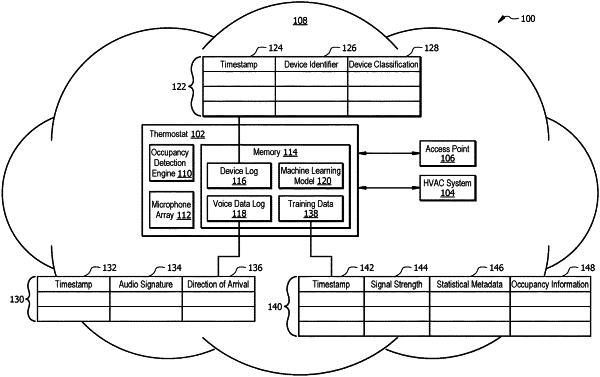| CPC F24F 11/49 (2018.01) [F24F 11/58 (2018.01); F24F 11/62 (2018.01); G05B 13/0265 (2013.01); G05B 13/048 (2013.01); G10L 15/063 (2013.01); G10L 25/51 (2013.01); G10L 25/78 (2013.01); H04W 4/023 (2013.01); H04W 76/10 (2018.02); F24F 2110/10 (2018.01); F24F 2120/12 (2018.01)] | 17 Claims |

|
1. An occupancy tracking device, comprising:
a network interface operably coupled to a Heating, Ventilation, and Air Conditioning (HVAC) system, wherein the HVAC system is configured to control a temperature of a space; and
a processor operably coupled to the network interface, configured to:
establish a network connection with an access point;
capture wireless signal distortion information for the network connection over a first predetermined time period, wherein the wireless signal distortion information identifies a first plurality of signal strength measurements of the network connection with the access point;
input the wireless signal distortion information into a machine learning model, wherein:
the machine learning model is configured to determine a predicted occupancy level based at least in part upon the wireless signal distortion information; and
the predicted occupancy level indicates a number of people that are present within with the space;
obtain the predicted occupancy level from the machine learning model;
control the HVAC system based at least in part upon the predicted occupancy level;
capture training information for the network connection over a second predetermined time period, wherein:
the training information identifies a second plurality of signal strength measurements of the network connection with the access point; and
the second predetermined time period is different from the first predetermined time period;
when capturing the training information over the second predetermined time period:
determine a number of people that are present within the space; and
train the machine learning model using the training information and the number of people that are present within the space.
|